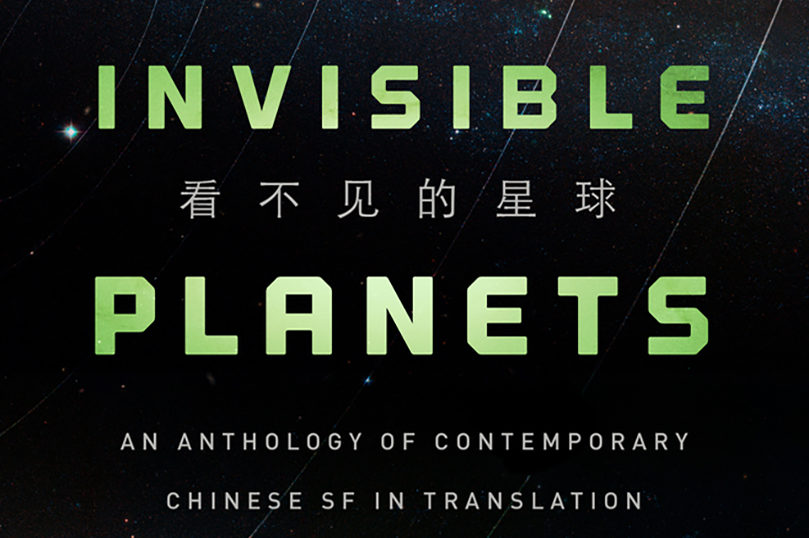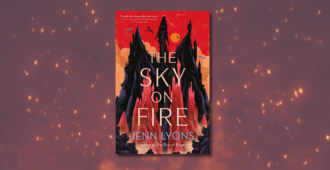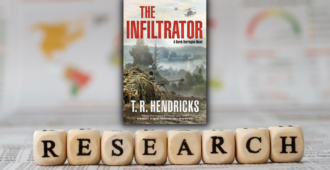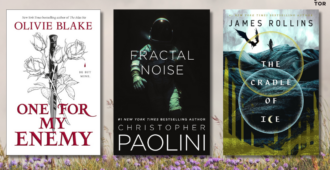opens in a new window opens in a new window
opens in a new window opens in a new window
opens in a new window opens in a new window
opens in a new window opens in a new window
opens in a new window opens in a new window
opens in a new window
opens in a new window Written by Ken Liu
Written by Ken Liu
Invisible Planets is the first English-language anthology of contemporary Chinese science fiction. Inevitably, the question arises of just how “faithful” the translations are. The simple answer is: “very” and also “not at all.”
I often compare translation to the performing arts, but that’s not quite right. We (rightfully) celebrate a concert pianist’s brilliance in interpreting the dead notes in a score, and we argue over which actress’s version of Viola gives the most interesting twist to Twelfth Night, but we are hesitant to say much about the translator’s contribution to our enjoyment of a book, even though comparing any two versions of the Bible ought to convince the most skeptical reader of how much difference translation makes.
Some of this is because the distinct contributions of the translator (like the contributions of a skillful editor), are often difficult to see. While listeners can often compare many different performances of the same musical composition, most modern works of fiction are translated into English only once. While anyone can read the text of a play and readily see the additions, both verbal and nonverbal, made by an actress, only those who can and have read the original novel or short story can fully appreciate the choices and changes made by the translator. Since translation appears opaque to most of us, we are hesitant to attribute much to the translator.
But I think there’s a deeper cause for the unease we feel toward translators: since we do not fundamentally believe what they do adds value to a work of art, we do not trust them.
A piece of music performed by an orchestra is no longer just markings on the page; rather, it’s a living, beating heart that makes its presence felt through time. A play that is performed by actors is no longer a textual artifact; rather, it’s a complex, multi-sensory experience. But after a translator is done with a text, we still have nothing more than a text.
The translator is thus seen as a necessary evil—merely a passive lens necessary to decode the hieroglyphics of people who are not so fortunate as to write and speak our language. The best that a translator can do is to be unnoticeable, and anything short of perfection would be deemed a “distortion.” Thus, the most value that a translator can add to a work is precisely zero (and many times, readers work from the assumption that translators subtract rather than add).
This sentiment is expressed by readers and writers in countless ways: from reviews that attribute anything the reader disliked to the translation, to omissions of the translator’s name when works in translation are nominated for awards. We do not, fundamentally, believe that translators add anything.
There isn’t enough space in this essay for me to delve into all the ways in which translators do, in fact, transform works of art. Suffice it to say that a “faithful” translation, the ideal of many readers, is simply impossible. Cultures are distinct from each other, as are the ways they have chosen to partition and shape experience linguistically. Every translation is thus an act of cultural negotiation, a performance for (at least) two audiences balanced on the edge of betrayal and subversion. The translated text is a new work of art derived from the original, but with its own internal life, logic, and separate aesthetics. Betrayal is not only inevitable; it is desirable.
I think it’s most useful to think of the translator as a co-author. And like any collaboration, a translation is full of internal tensions and contradictions: between the intent of the author and the intent of the translator, between the expectations of the original audience and the expectations of the target audience, between the literary tradition that the original is in dialogue with and the literary tradition that the translation is thrust into, between the desire to assert that the text is universal (in spite of language) and the need to defend the unique cultural milieu in which it was written (despite translation).
The tension between the translator and the author is rarely acknowledged, though all writers whose works have been translated have felt it to some degree. Many authors view being translated with anxiety, as though their work is being taken away from them, and their chief concern is the desire to retain control. But like any act of collaborative adaptation and performance, control by the original author is neither possible nor even desirable. A good director or musician will not feel bound by the desires of the playwright or composer — for the performance is a distinct medium with its own needs and rules, and the same is true of translation into a new linguistic medium.
For writers and readers alike, I posit that it’s best to think of the translator as an invisible co-author. Like the titular objects in Invisible Planets, the translator’s presence cannot be seen but can be felt. They open up new vistas and sling new trajectories.
And indeed, I suspect most translators rather enjoy the unique role of being an invisible co-author. The lack of focus on their art paradoxically also gives them more space to experiment and push boundaries, to betray and negotiate in the tunnels of the word-mines in darkness. Translation may be the one performance art that thrives in the anonymity of its performers.
As you read the stories in Invisible Planets, I invite you to think about the imperfection of any attempt at communication, trans-linguistic or otherwise. We are each our own translators, forever adapting and shaping our internal representations of the external world, betraying endlessly.
opens in a new window opens in a new window
opens in a new window opens in a new window
opens in a new window opens in a new window
opens in a new window opens in a new window
opens in a new window opens in a new window
opens in a new window
Follow Ken Liu on Twitter, on Facebook, and on his website.







Over the weekend I watched a documentary on Netflic called “Being George Clooney,” which is about the various actors around the world who dub Clooney’s voice for local distribution. Along the way they interview others who do the same job, like the French woman who dubs Angelina Jolie and the German actress who voices Scarlett Johanssen or the guy who has been doing De Niro since Taxi Driver.
They touched on many of these same topics of translation, of the struggle to find an equal idiom to convey American slang into Turkish or Italian, and how that sometimes shocks sensibilities, like when Shreck mocks Donkey and says he’s going to take Donkey to the slaughterhouse… which is apparently a hilarious pun in that culture.
One thing I found interesting was that a couple of the actors said English was a more precise language, so it was sometimes difficult to fit in all the words necessary to convey the same idea, so they often had to speak much more rapidly. Years ago a friend of mine commented on a Japanese movie that had been subtitled, “Japanese isn’t a very efficient language.”
I suppose you don’t have those issues when translating a novel, but I have witnessed people arguing over which translation of Beowulf or Don Quixote is more accurate.
At least this is one area where computers won’t be able to do the job as well as people, so there’s that.
One could also say that creating a movie or TV show/series from a text is also a work of translation. Again, there’s the lack of control, a different “language,” and the memes thereof. It’s the first step, before performance gets its own “translation” hooks in.
And, @Trike, the concept of idea conveyance comes into play here as well: visual arts can summarize a whole chapter’s worth of words, but cannot deal as well with the internal motivations, thoughts, and emotions, which depend on the performance translation – a 3rd generation, if you would.
Actually this is not the first English-language anthology of contemporary Chinese science fiction. The first would be: Science Fiction from China, New York: Praeger, 1989.